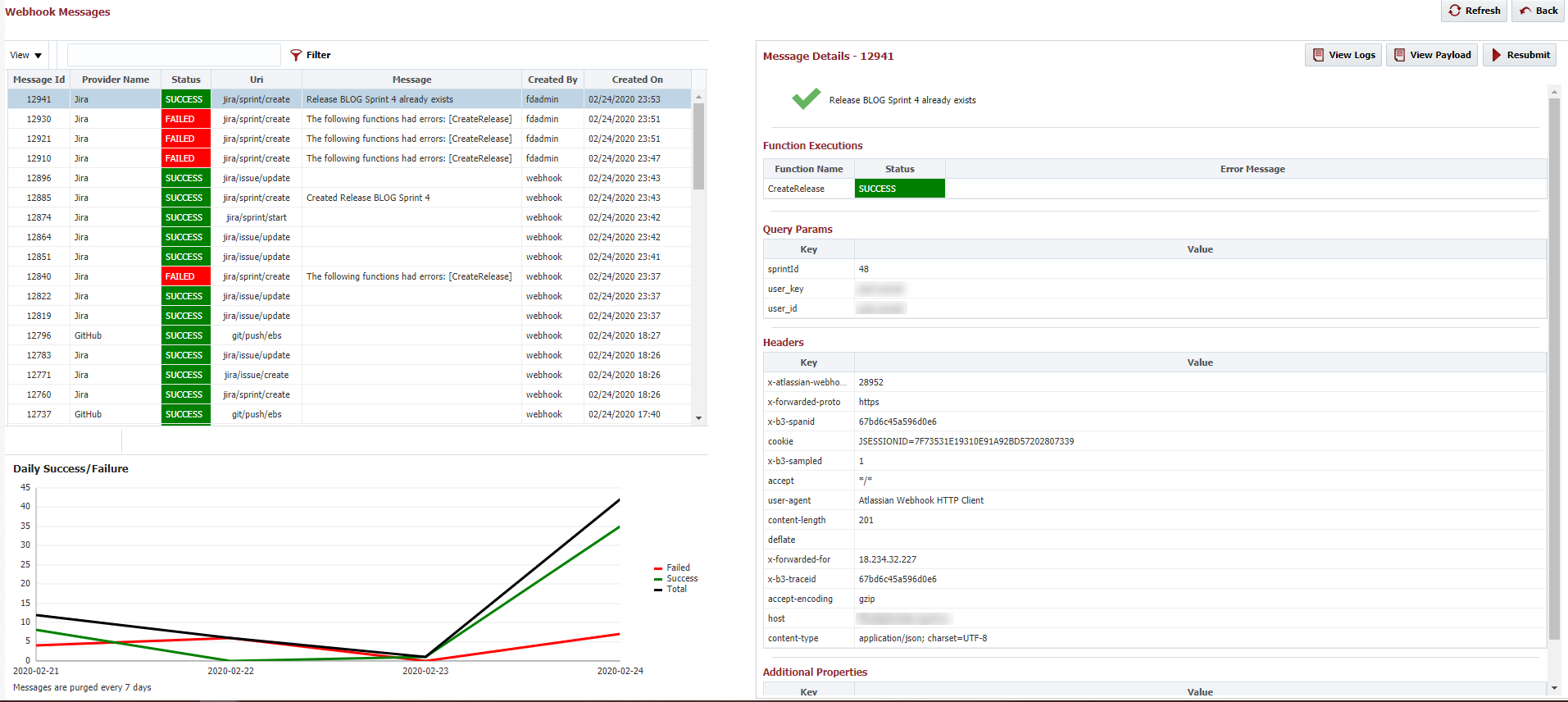Webhook Messages
Each incoming webhook received by FlexDeploy will be saved as a Webhook Message. This provides a way to track everything that's coming in and debug as needed. Messages can be viewed by navigating to Administration → Integrations → Webhooks and clicking .
Viewing Messages
The table on the left side of the screen shows all webhooks received within the last week. Messages are purged automatically after 7 days.
| Field | Description |
|---|---|
| Message Id | The id given to message |
| Provider Name | The provider the message was matched to |
| Status | The status of the message. Can be SUCCESS, PENDING, or FAILED |
| Uri | The uri where the webhook was received |
| Message | A message containing more detail on the execution. This message can be set in a function script by using the LOG.setMessage function. If any errors occur during execution, the message will be overwritten |
| Created By | User who created the webhook |
| Created On | Date and time of webhook message creation |
Viewing Message Details
Click on any webhook message row in the table to view more details about an individual message. This will show more detail about the execution, including any webhook functions which were executed from this trigger and their statuses, as well as more context about the incoming webhook, including query parameters, headers, and additional properties.
Click to view the entire payload received from the provider. More information on the execution can be viewed by clicking . This will show any log messages printed in function scripts using the LOG methods. You can also submit an incoming Webhook Message to be executed again with the button. Keep in mind this is only meant to be used for debugging purposes. There is a Global Permission defined on groups to control who is allowed to resubmit Webhook Messages.
Warning
Often times certain headers will be used to validate incoming messages, as such you should ensure that only select individuals have access to view the message details and payload. Leaving this information open for everyone in your organization to see could result in security issues. You can control access to this via the 'View Message Details' Global Permission.
Log Messages
Logs are printed by using the LOG methods in the provider match and function scripts. By default, the logging level will be based on the global FlexDeploy logging level. This can be modified specifically for webhook logs by setting the logging level for flexagon.fd.services.groovy.functions.LogFunctions in Admin → Admin Operations.
Some internal logs are printed automatically during execution. These logs will be at FINEST level.
- style






